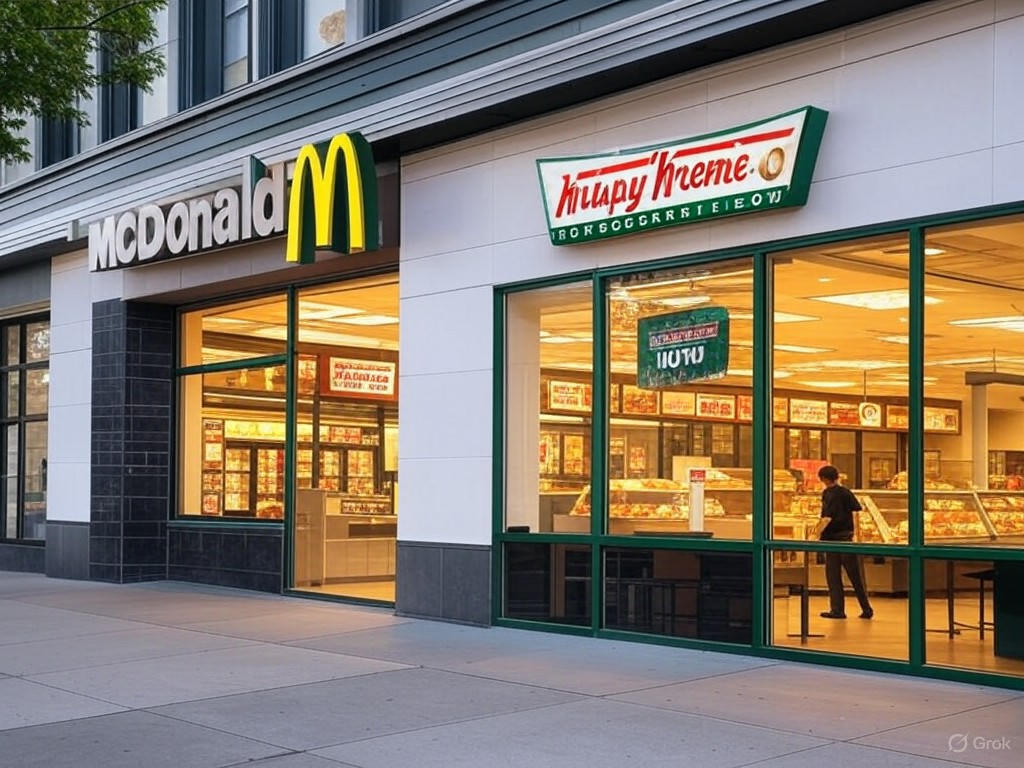In a surprising turn of events, fast-food giant McDonald’s and iconic doughnut maker Krispy Kreme have decided to part ways, dissolving a partnership that began with much fanfare in March of last year. The collaboration aimed to sweeten McDonald’s breakfast offerings by introducing Krispy Kreme’s beloved doughnuts to over 14,000 locations across the United States. However, after just over a year, both companies have mutually agreed to end the deal, citing challenges in sustaining the arrangement.
The partnership initially sparked excitement among fans of both brands, with McDonald’s hoping to attract more morning customers by pairing its coffee and breakfast items with Krispy Kreme’s signature glazed treats. The doughnuts were expected to be a game-changer, offering a fresh and indulgent option to compete with other breakfast-heavy chains. Yet, despite the promising start, the collaboration faced significant hurdles. Industry insiders suggest that logistical issues, such as maintaining the freshness of doughnuts during delivery and storage, played a major role in the decision to terminate the deal. Additionally, the cost of integrating a new product line into McDonald’s vast network may have proven more burdensome than anticipated, with profit margins falling short of expectations for both parties.
From a business perspective, the split raises questions about the viability of such high-profile partnerships in the fast-food sector. McDonald’s, known for its streamlined operations and focus on core menu items, may have underestimated the complexities of incorporating a perishable product like doughnuts into its daily workflow. For Krispy Kreme, the partnership offered a chance to expand its reach beyond standalone stores, but the operational demands of supplying a chain as large as McDonald’s could have strained its resources. A spokesperson for one of the companies reportedly described the arrangement as ‘unsustainable,’ hinting at deeper financial or strategic misalignments that couldn’t be resolved.
This development also reflects broader trends in the fast-food industry, where companies are constantly experimenting with menu innovations to capture consumer interest. Breakfast remains a fiercely competitive segment, and McDonald’s may now pivot to other strategies to bolster its morning sales, potentially focusing on in-house recipes or partnerships with less operationally complex products. Meanwhile, Krispy Kreme could redirect its efforts toward strengthening its own retail presence or exploring smaller-scale collaborations that better align with its capabilities.
As the dust settles on this short-lived alliance, both McDonald’s and Krispy Kreme are likely to take valuable lessons from the experience. For consumers, the end of this partnership means bidding farewell to the unique pairing of a McMuffin and a glazed doughnut—at least for now. However, in the ever-evolving world of fast food, it’s only a matter of time before another bold collaboration captures our taste buds. Both brands remain giants in their respective fields, and this setback is unlikely to dampen their long-term ambitions.
